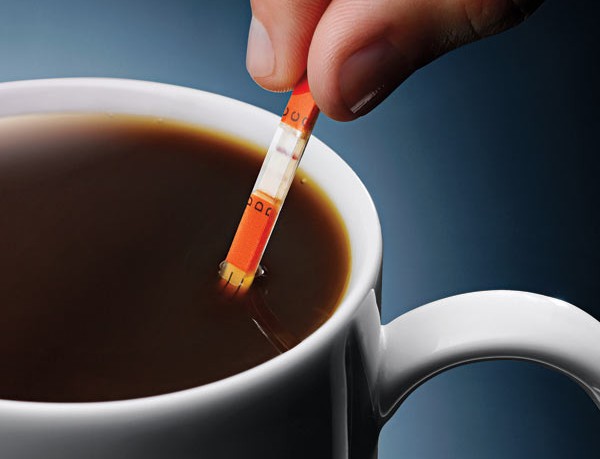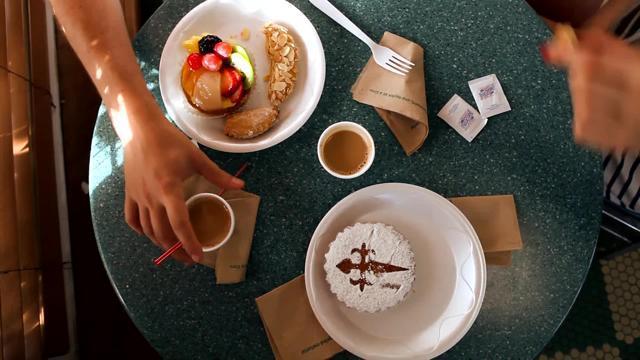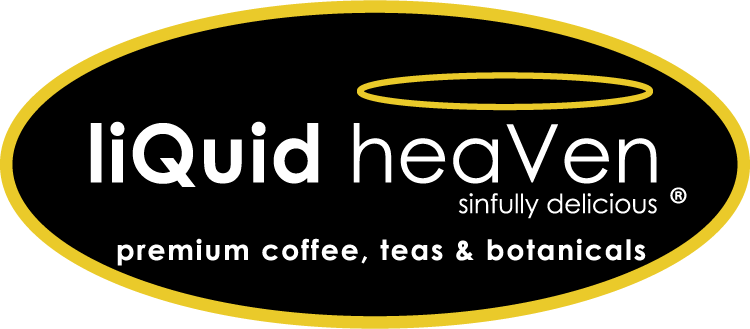10/09/2014
10/08/2014
Keurig 2.0 brews up DRM to freeze out copycat cups
The brand's next generation of single-serve coffeemakers won't be brewing anything other than Keurig-approved pods.
There's some reason for Green Mountain to be optimistic about the next generation's chances, though. With new features like larger serving sizes and the ability to brew an entire pot, Keurig 2.0 will probably have more direct appeal to coffee lovers than Vue did. Green Mountain's recently announced partnership with Coca-Cola and its plans to release a cold brewer this fall could also engender some excitement about what's coming next. There's also the fact that Keurig 2.0 brewers will continue brewing the existing generation of Keurig-licensed K-Cups, making them less of a leap for consumers than the Vue brewers and their proprietary Vue Packs were.
Still, there's quite a lot at stake here for Green Mountain. If Keurig 2.0 fails to catch on, then the company will find itself in an especially vulnerable spot, not only facing increasing levels of competition from big names like Nestle and Starbucks, but also from its own, existing brewers -- many of which will continue making the competition's coffee.
Source: CNET
Coffee Futures Jump to 32-Month High on Brazil Crop Woes
Coffee futures surged to a 32-month high on speculation that persistent
drought will curb next year’s harvest in Brazil, the world’s largest grower and
exporter.
Dry weather was forecast for the next 10 days after no “meaningful” rain
fell over the weekend in Brazil’s main growing regions, Drew Lerner, the
president of World Weather Inc. in Overland Park,Kansas, said in a telephone
interview. Arabica-coffee prices have almost doubled this year with crops
parched since the start of the year.
With damage worsening before the start of spring in the Southern
Hemisphere, Brazil’s National Coffee Council has estimated that farmers may
collect less than 40 million bags in 2015, creating the longest output slump in
five decades. Starbucks Corp. and J.M. Smucker Co. raised retail prices this
year after futures surged 61 percent in the first quarter.
“Now, trading is all about the weather,” Fain Shaffer, the president of
Infinity Trading Corp. in Indianapolis, said in an e-mail. “Since the chances of
rain have been pushed back another week, we are seeing more premium being built
into prices.”
Arabica coffee for December delivery climbed 6.9 percent to settle at
$2.208 a pound at 1:36 p.m. on ICE Futures U.S. in New York, the biggest gain
for a most-active contract since April 22. Earlier, the price reached $2.255,
the highest for a most-active contract since Jan. 20, 2012.
Flowers for the crop that blossomed from August to late September may fall
off before developing further, Cepea, a University of Sao Paulo research group,
said on Oct. 1.
‘Critical Period’
“It’s a critical period for the Brazilian arabica crop, which is
flowering,” Tracey Allen, an analyst at Rabobank International in London, said
in an e-mail. “Meaningful rain has not yet been received. Continuous rain is
important during flowering to help the flowers develop into the fruit.”
Production this year may be down as much as 18 percent to 40.1 million
bags, the National Coffee Council estimated, after a 3.1 percent slide last
year.
Today, coffee rose as Brazil’s real climbed the most since August 2013.
President Dilma Rousseff faces a runoff election with Aecio Neves, who has
appealed to investors by pledging to slow inflation. A stronger real erodes the
appeal of export sales of the commodity priced in dollars.
Speculators “are particularly active, certainly from a currency point of
view,” Rabobank’s Allen said.
Trading Jumps
Aggregate futures trading was 56 percent above the average for the past 100
days for this time, according to data compiled by Bloomberg.
Bets on higher prices by money managers climbed 12 percent to 39,158
futures and options contracts as of Sept. 30, U.S. Commodity Futures Trading
Commission data showed on Oct. 3.
Coffee has posted the biggest gain this year among 22 raw materials in the
Bloomberg Commodity Index of 22 raw materials. The broad gauge dropped 5 percent
in 2014.
Robusta coffee for November delivery rose 4.1 percent to $2,165 a metric
ton on ICE Futures Europe in London. Earlier, the price reached $2,169, the
highest since May 2. The commodity climbed 29 percent this year.
The arabica premium to robusta was the highest since February 2012. The
ratio has more than tripled this year. Arabica is brewed by specialty companies
including Starbucks, while robusta beans are used in instant coffee.
Brazil is the biggest grower of arabica, and Vietnam is the top producer of
robusta. A bag weighs 60 kilograms (132 pounds).
Source: Bloomberg
Coffee consumption: It's in your DNA
A new study found genetic variants linked with coffee consumption habits.
"This might explain why people vary in not only their coffee consumption behavior but also the stimulating or rewarding effect that coffee produces," Marilyn Cornelis, research associate in the Department of Nutrition at Harvard School of Public Health and the lead author of the study, told USA TODAY Network.
Because coffee consumption can impact health, this new research may help identify people who would benefit from increasing or decreasing the amount of coffee they drink each day, according to a press release from Harvard School of Public Health, who led the research along with researchers from Brigham and Women's Hospital.
"Like previous genetic analyses of smoking and alcohol consumption, this research serves as an example of how genetics can influence some types of habitual behavior," Daniel Chasman, associate professor at Brigham and Women's Hospital and the study's senior author, said in the statement.
The study is currently the largest of its kind, according to Cornelis. It analyzed the results of more than 120,000 participants who described how much coffee they drank a day and allowed their DNA to be scanned. The study looked for differences in their DNA associated with drinking more or less coffee.
Researchers found eight gene variants, two of which had already been linked to coffee consumption.
Four of the six new variants implicate genes that are involved with caffeine, either in how the body breaks it down or in its stimulating effects, the researchers said in a paper released Tuesday by the journal Molecular Psychiatry.
The two other newly implicated genes were a surprise because there's no clear biological link to coffee or caffeine, according to the research. They are instead involved with cholesterol levels and blood sugar.
Source: USA Today
How Decaffeinated Coffee is Made

Today I found how caffeine is removed from coffee to produce the decaffeinated version of the world’s most popular drink.
There are several different methods used that can make coffee relatively decaffeinated. The drawback (or advantage, depending on your preference) of all of these methods is that they generally make the coffee flavor milder due to caffeine being one of the components which gives coffee its bitter, acidic flavor.
The general decaffeination processes includes soaking the still green coffee beans in hot water (160-210 degrees Fahrenheit) and then some sort of solvent or activated carbon is used to extract/dissolve the caffeine. The solvents typically used are methylene chloride or ethyl acetate. Unfortunately with this process, the first batch of beans loses most of its flavor to the water and is often thrown out. However, once the dissolving liquid is saturated from the first batch, the subsequent batches retain much of their flavor. In some methods, the coffee beans from the first batch will be re-soaked in the water solution to reabsorb some of the flavor compounds, minus the dissolved caffeine, so that they can eventually be used for making decaffeinated coffee.
The first such process, as described above, for decaffeinating coffee was invented by Ludwig Roselius in 1905. This method used benzene, a potentially toxic hydrocarbon, to remove caffeine from presoaked green coffee beans. Coffee was steamed in brine and then benzene was applied to the beans. Nowadays, this method is considered unsafe and no longer used.
Another method is where the beans are steamed for half an hour, rather than immersed in water, and then rinsed with solvents – ethyl acetate or methylene chloride to extract and dissolve the caffeine from the beans. Ethyl acetate is an ester that is found naturally in fruits and vegetables such as bananas, apples, and coffee. The solvent is first circulated through a bed of moist green coffee beans and then recaptured in an evaporator while the beans are washed with water. After the chemicals are drained, the beans are steamed again. Usually the solvent is added to the vessel, circulated and emptied several times until the coffee has been decaffeinated to the desired level. The coffee is said to be ‘naturally decaffeinated’ when ethyl acetate derived from fruit or vegetables is used. The advantage of using these solvents for decaffeinating, is that they are generally more precisely targeted to caffeine and not other components that give coffee its distinct flavor. Up to 96% to 97 % of the caffeine from coffee can be extracted this way.
Another method, is known as the Swiss Water Process and employs a charcoal filter. The charcoal is normally used in conjunction with a carbohydrate solvent (highly compressed CO2 ) so only the caffeine is absorbed. In this method, first, the green coffee beans are soaked in hot water and then the first batch of coffee beans is discarded. The caffeine is then stripped from the solution by activated carbon filters. This leaves the solution saturated with flavor compounds which is then reused to soak a new batch of decaffeinated green coffee beans. This method extracts up to 98% of the caffeine. Carbon dioxide is also a popular solvent because it has a relatively low pressure critical point.
Another method known as the sparkling water decaffeination process is similar to the CO2 method, but instead of removing the caffeine with activated carbon filters, the caffeine is washed from the CO2 with sparkling water in a secondary tank. This type of solvent consists about 99.7% compressed carbon dioxide and 0.3% water.
Bonus Facts:
The coffee industry in the United States alone is valued at about $19 billion annually.
It takes five years for a coffee tree to reach full maturity. After that, each tree bears 1-2 pounds of coffee beans per growing season.
A six-ounce cup of coffee typically contains approximately 50 to 75 milligrams of caffeine. This amount varies depending on the method of preparation and the type of coffee. Unfortunately for people who are sensitive to caffeine, as little as 10 milligrams can cause discomfort making caffeinated coffee unpalatable for them.
There are 1,200 different chemical components in coffee with more than half of them contributing to the flavor of coffee.
Decaffeinated coffee still contains a small amount of caffeine, thus decaffeinated coffee is not technically caffeine-free.
Today, decaffeinated coffee accounts for approximately 12% of total worldwide coffee consumption.
Source: Today I Found Out
How Cubans Do Coffee

“Coffee is one of those extremely cultural things that a Cuban can not live without,” laughs the Miami resident (and native Cuban) featured in this video. In her community, from dawn to dusk, coffee serves as both ritual and source of pride.
Yet sources differ on what precisely makes a cup of joe “Cuban”, as writer Michelle Slatalla discovered in a 2003 New York Times story: Sources disagreed about the “proper” coffee bean, brewing method, and serving style, leading Slatalla to guess that “Cuban-style coffee was more of a state of mind than anything else.”
Most experts agree that an espresso brewing method is key, as is the azuquita, a crema produced when a small amount of the espresso is frothed by hand with sugar, then added to the rest of the brew. Cookbook author Lourdes Castro at Epicurious wrote emphatically, "Many don’t realize that it’s the technique for making the crema—not the type of coffee beans used—that makes the coffee Cuban.”
Our video narrator’s tip? “I have a little secret between my grandfather and I. He would add just a tidbit of salt—just a little bit, because you don’t want to overdo it.” A few granules makes sugar taste even sweeter, a phenomenon backed up by science. We’ll drink to that.
Source: Yahoo Food
Subscribe to:
Posts (Atom)









